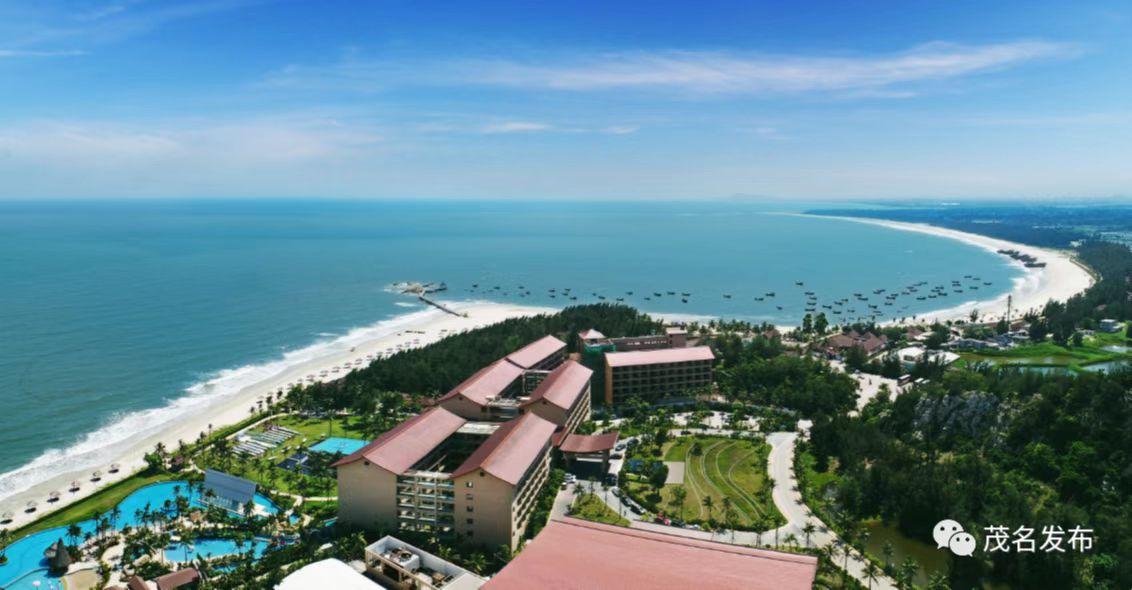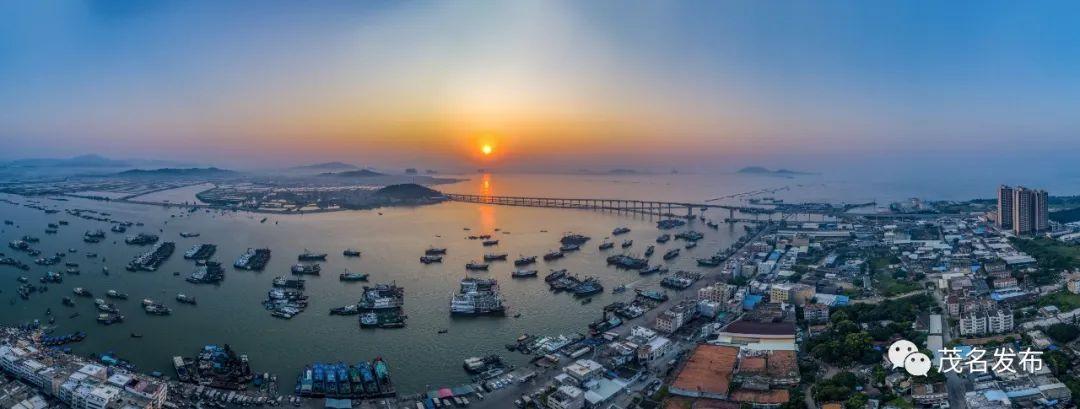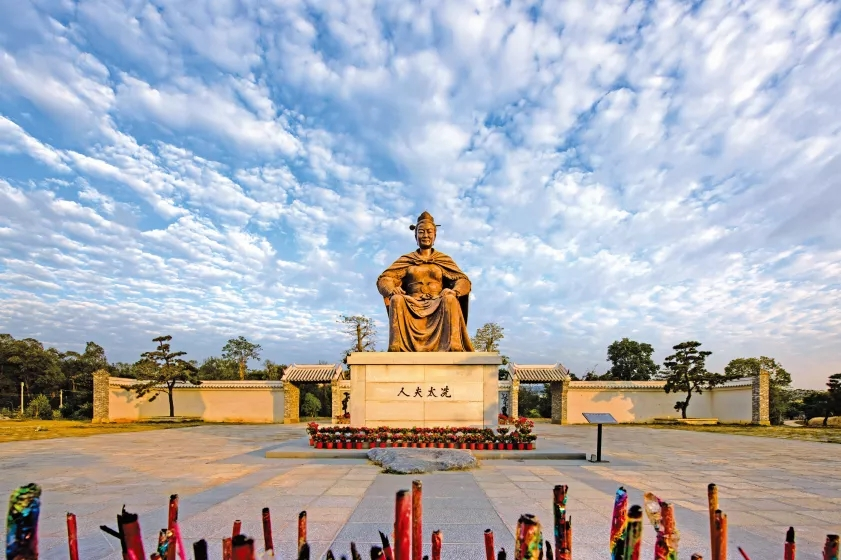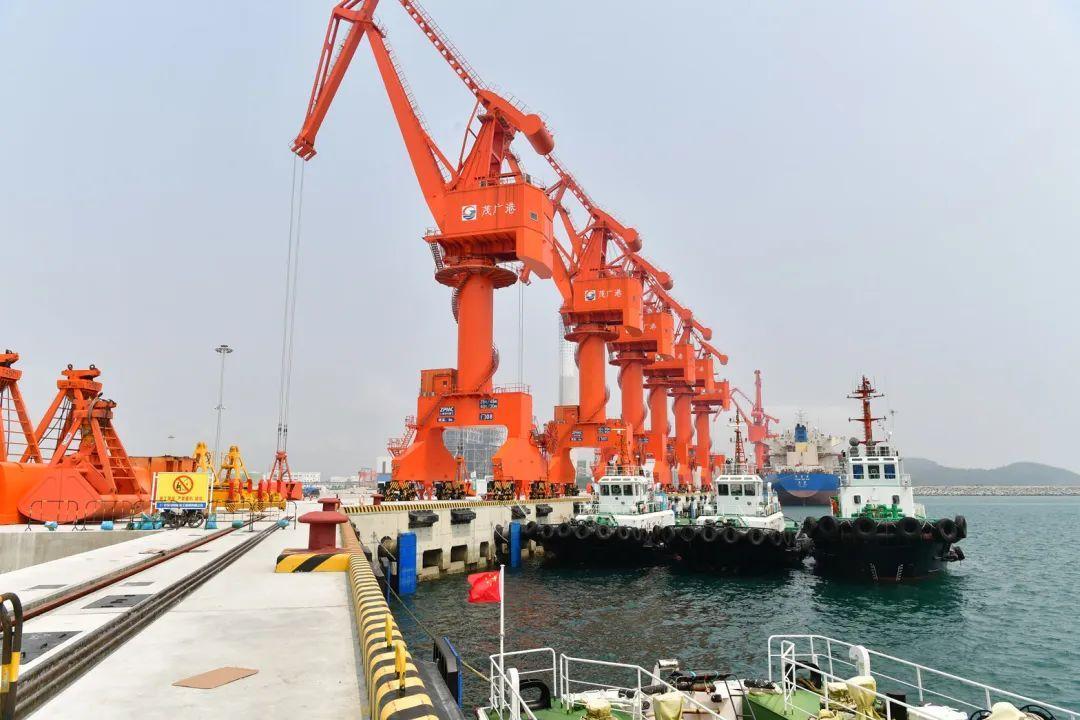Maoming: rich in Maritime Silk Road culture
BY :丝路云帆
UPDATED :2023-12-28
Maoming is located on the coast of the South China Sea in southwest Guangdong province. It sits at the crossroads of three national strategic development areas, namely, the Guangdong-Hong Kong-Macao Greater Bay Area, the Beibu Gulf Economic Zone and the Hainan Free Trade Port.
Maoming is one of China's excellent tourism cities for its beautiful scenery of mountains and sea, and boasts profound Maritime Silk Road culture.

According to historical records, Maoming was once a major stopover port on the ancient Maritime Silk Road during the Qin and Han dynasties (221 B.C.-220 A.D.). At that time, merchant ships traveling between Guangdong's Panyu and Xuwen ports and ports in Southeast Asian nations often visited Maoming for resupplies.
In the Tang Dynasty (618-907 A.D.), people in Bohe and Diancheng towns of Maoming were able to manufacture ocean-going vessels with composite materials of copper, iron and wood. Maritime trade later developed rapidly in western Guangdong, bringing exotic goods such as ivory, rhinoceros horn, emerald, jade, tortoiseshell and spice to the local market.
Dianbai district of Maoming, where the two towns belong, also thrived on sea salt trade and became one of China's biggest production areas of sea salt during the Northern Song Dynasty (960-1127 A.D.).

Bohe Port
Between the Song and Yuan dynasties (960-1368 A.D.), Bohe and its surrounding areas gradually emerged as China's main shipbuilders, famous for manufacturing Gaozhou vessel, which was one of the four major types of vessels made in Lingnan region in ancient times, together with vessels from Canton, Chaozhou, and Hainan.
Back to the Northern and Southern Dynasties (420-589 A.D.), a chaotic period in ancient China, Lady Xian, leader of the Gaoliang tribe, set sail from what is now Maoming Binhai New Area to Hainan island. She settled the internal conflicts and pacified Hainan, winning people over with her virtue and prestige.
She also opened up sea trade routes to closely connect Hainan with other Chinese cities, devoting herself to safeguarding the social stability and unity and the peaceful development in Lingnan region and making outstanding contributions to consolidating the country's maritime territory in the South China Sea.
Lady Xian was deified as the "Saintly Mother of Lingnan". And ancient Chinese people had built temples to worship her. The contributions of this great lady are also recognized in modern China. And she was praised as "the first heroine of China" and "a role model of all times".

Since the Ming and Qing dynasties (1368-1912), the folk belief of Lady Xian has been introduced to overseas as merchants from Maoming expanded their global footprints. Nowadays, there are more than 1,500 temples dedicated to Lady Xian worldwide, 607 of which are in Maoming, while the rest are in other cities of China, Malaysia, Vietnam, Thailand, Singapore, France and other countries.
Having spread beyond borders, the folk belief of Lady Xian strengthens the bond between overseas Chinese and their motherland, and becomes an important part of the Maritime Silk Road culture. It is a cultural legacy shared by people from different parts of the world.

Up to now, Maoming has discovered 46 heritage sites related to the ancient Maritime Silk Road. Among them, 13 are associated with Lady Xian, 9 are temples dedicated to Tianhou, the Goddess of the Sea, 13 are commercial heritages such as ancient ports, wharves and shipyards, 2 are porcelain industrial heritages, 5 are historical residential buildings and 4 are related to the ancient Gaozhou prefecture.
Some of these heritage sites are national or provincial-level key protected cultural relic units. And a number of artefacts unearthed from these sites are solid proofs of Maoming's connection with the ancient Maritime Silk Road.
The artefacts include a giant canoe, coins from Persia, pearls and agates, a copper sceptre with a Kunlun female figurine (Kunlun used to refer to foreigners with dark skin), and a copper statue of Shakyamuni Buddha, all of which witnessed the cultural exchanges between China and foreign countries from the Southern Dynasties to the Tang Dynasty.
In 2017, the Maritime Silk Road heritage site of Maoming Binhai New Area entered the list of the top 10 Maritime Silk Road landmarks in Guangdong. On December 23, 2022, Maoming officially joined China's City Alliance for Maritime Silk Road Heritage Conservation and World Heritage Nomination. With this opportunity, the city will continue to explore the value of its abundant Maritime Silk Road heritages and look for possibility to gain UNESCO World Heritage status.
Sources: 茂名发布,南方日报







